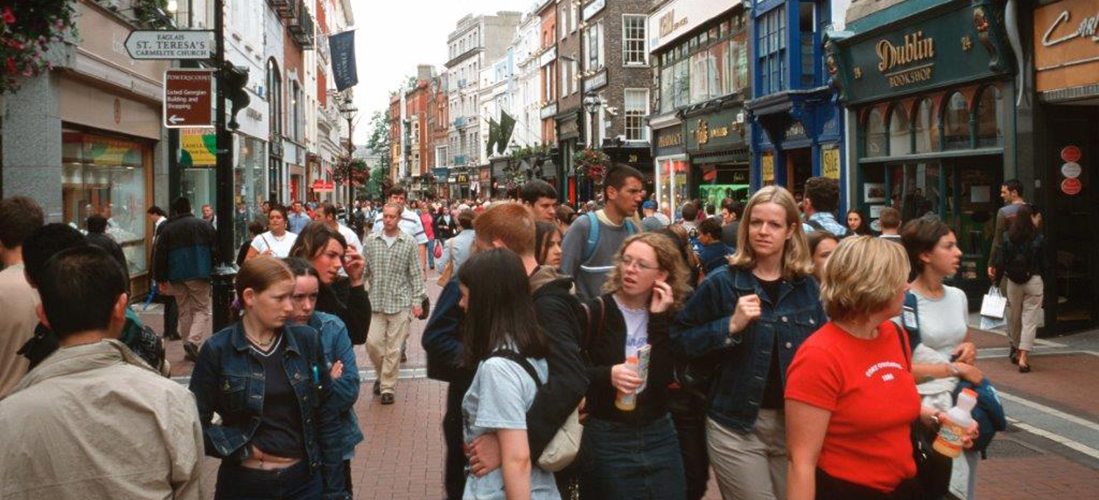June 30, 2017
[caption id="attachment_20402" align="alignnone" width="1099"] Shoppers in Dublin, Ireland: the country has high income inequality, before taxes and transfers (photo: Caro Rupert Oberhaeuser/Newscom)[/caption]
Shoppers in Dublin, Ireland: the country has high income inequality, before taxes and transfers (photo: Caro Rupert Oberhaeuser/Newscom)[/caption]
Ireland’s economy continues to recover after a housing market crash in 2008 plunged the country into a deep and severe crisis. The strong social welfare system provided an important cushion against the worst effects of the crisis.
Ireland’s tax-benefit system is one of the most effective in the European Union in redistributing income. The tax system is relatively progressive and funds a robust system of social benefits, a significant share of which is means-tested. Income inequality before taxes and transfers in Ireland is high—37 percent of income is held by the top 10 percent of income earners. Social transfers make up about 70 percent of income for the bottom 20 percent of earners.
Our Chart of the Week from a new paper shows how Ireland has over a number of years used social benefits and taxes to reduce high income inequality.
The most common measure of income inequality is the Gini coefficient, where zero expresses perfect equality, and 100 expresses maximum inequality. In Ireland’s case, about 60 percent of the average 25-percentage point improvement in income inequality, as measured by the difference between the Gini coefficient before and after taxes and transfers, was driven by social benefits. This is one of the highest among EU countries and largely means-tested. Another one-fourth of the improvement was due to direct taxes, which is broadly in line with the EU average.
Part of the story of income inequality in Ireland is also about geography: 40 percent of the population live in Dublin, which has more employment opportunities and higher incomes. Regions that suffered high unemployment before the crisis continue to lag in the ongoing recovery.
Ireland still faces an uphill battle: long-term unemployment above pre-crisis levels, a relatively low participation rate in the labor force, driven in part from low participation by women, and young people facing more uncertain job opportunities than they did before the crisis.
Part of the solution, already under way, is to build on already strong basic and tertiary educational attainment to take advantage of opportunities in high productivity sectors such as information and communication technology. Broader investment in vocational training and apprenticeships are also key to help new job-market entrants and those looking to return to work. The National Skills Strategy aims to provide skill development opportunities and foster lifelong learning. New Regional Skills Fora will facilitate ongoing employer-educator dialogue to match identified needs with sustainable provision in each region, to optimize the return on investment in education and training.
Also, to help more women enter the workforce, Ireland needs high quality and affordable childcare. To tackle this, the government will replace existing programs with the generally means-tested Single Affordable Childcare Scheme in September, with a strong focus on low-income, disadvantaged families. Further efforts to strengthen incentives to work, including by reducing high marginal income taxes for second earners, would also help women join the paid workforce.
For more on the challenges facing women and young people in the global economy, check out our March issue of Finance and Development Magazine’s feature on policies that help integrate women into the workforce, and our June issue on Millennials and the Future of Work.







